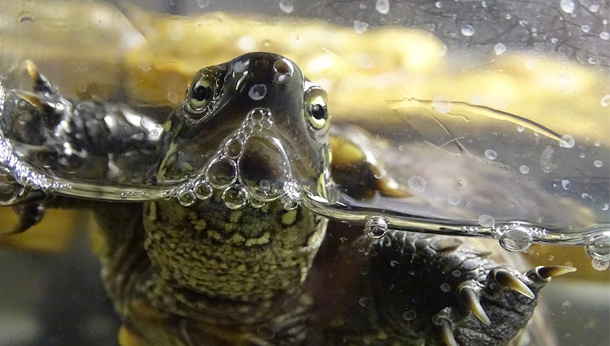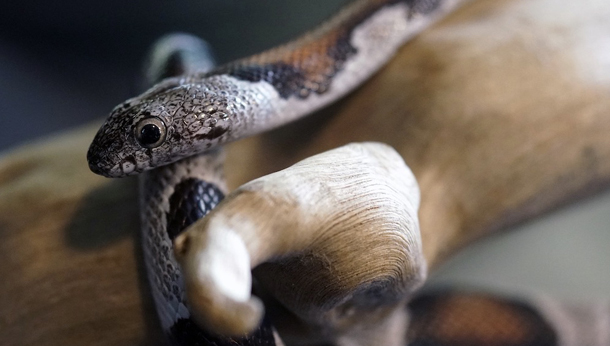Author: Amy Holloway
Do you know how old your exotic pet is? You can’t actually tell how old a reptile is just by looking at them as unlike mammals who mostly show obvious signs of ageing, reptiles’ colours don’t fade and their reflexes can stay as fast as ever well into their senior years. In fact, some reptiles never show their age and will eat and move as they always have throughout their lives.
Signs of ageing in reptiles include:
- Lower breeding activities, such as egg laying.
- More susceptible to fractures, especially in larger species like iguanas.
- More time spent basking.
- Weight loss and sunken eyes in lizards and turtles.
- Snakes can appear ‘bonier’, but not always.
Mobility issues in older reptiles
As pet tortoises, iguanas, geckos, and other reptiles age, they can develop stiff joints and mobility issues just like all pets. That’s why it’s important to make sure your reptile’s basking area is easily accessible to them. Ageing semiaquatic turtles will need readily accessible flat cleated boards on which they can easily leave the water, and flat basking boards that are also easily reached.

While you’re at it, you may want to assess their whole enclosure setup, including how they enter and exit, to make sure it’s not causing them any unnecessary difficulties.
Speaking of mobility issues, some ageing pet reptiles (iguanas in particular) are more susceptible to falls and fractures as their bone density decreases, and preventing them is all part of elderly reptile care. Take extra care when carrying your pet so they can’t jump and they’re not dropped. Swapping any narrow branches for wider ones in their enclosure can also help.
Changes in diet
Diet can become an issue as pets become seniors. Pet snakes for example may find it more difficult to digest larger prey and will regurgitate their food. You can prevent regurgitation by keeping the temperature of your snake’s enclosure stable and comfortable, and by feeding them two small mice instead of one big one, or increasing their feeding intervals with smaller mice.

For other types of pet reptiles, you can space out their meals into smaller portions to help with digestion if they are struggling, and you can tear up your tortoise’s greens into smaller, more manageable pieces.
Keep stress levels low
To help your reptile grow old gracefully, it’s important to keep their life as stress-free as possible. Don’t keep elderly males where they can see younger breeding males of the same species. Territoriality (breeding) displays by male lizards are intended to intimidate males within his species. Even when kept in a separate terrarium across a room, your ageing, non-breeding male will be unnecessarily stressed if he can view ongoing territorial displays by younger males.
Regular checks
The best thing you can do for your pet as they get older is to monitor them. If you spot anything unusual, contact our veterinary team and book a health check.
Potential lifespans of pet tortoises
One final thing, when it comes to pet tortoises, some species can live as long, if not longer than humans. Who will care for your senior tortoise in the event that they outlive you?
- Horsefield tortoise 60+ years
- Hermanns tortoise 100+ years
- Spur Thighed tortoise 100+ years
- Leopard tortoise 80+years
- Marginated tortoise 100+ years
- Indian Star tortoise Up to 80 years
- Sulcata / African Giant Spurred or Sahel tortoise 100+ years
Contact us for tortoise advice.